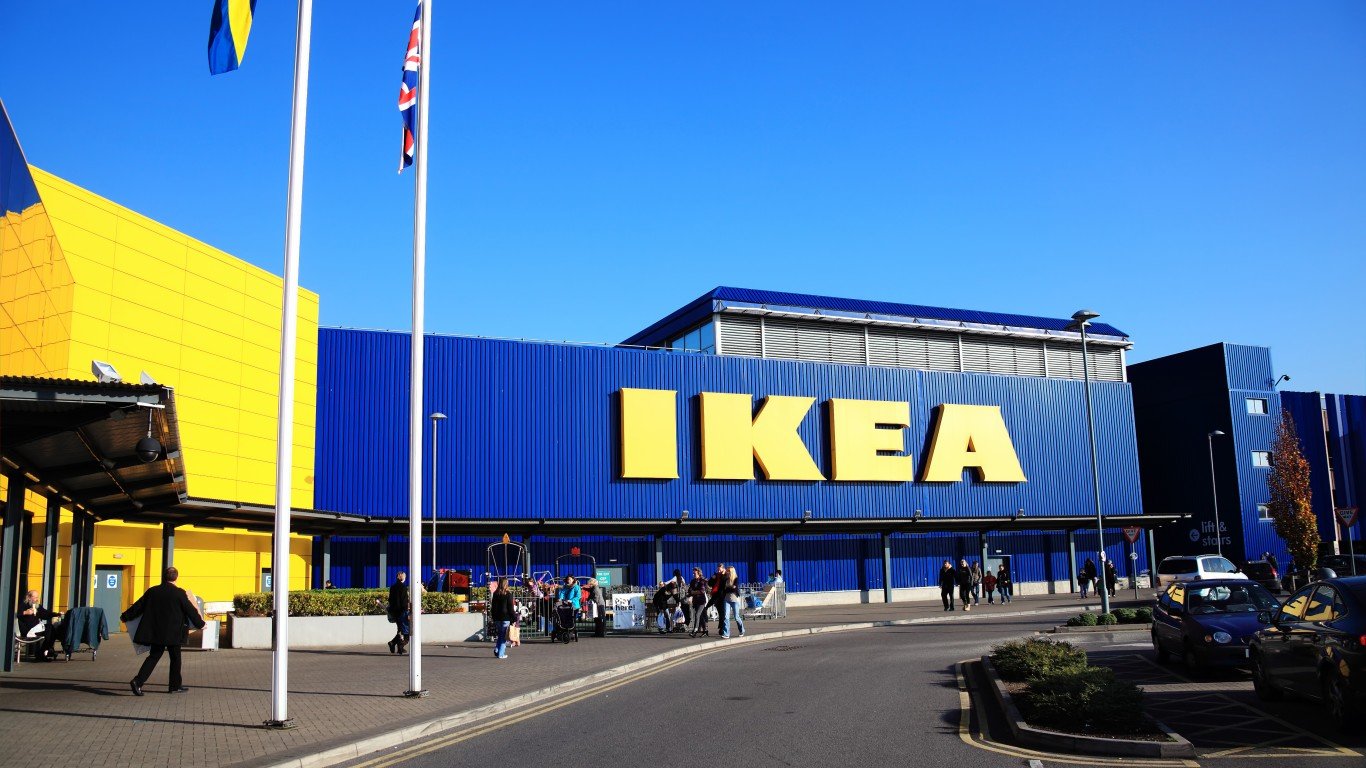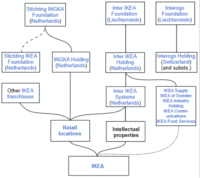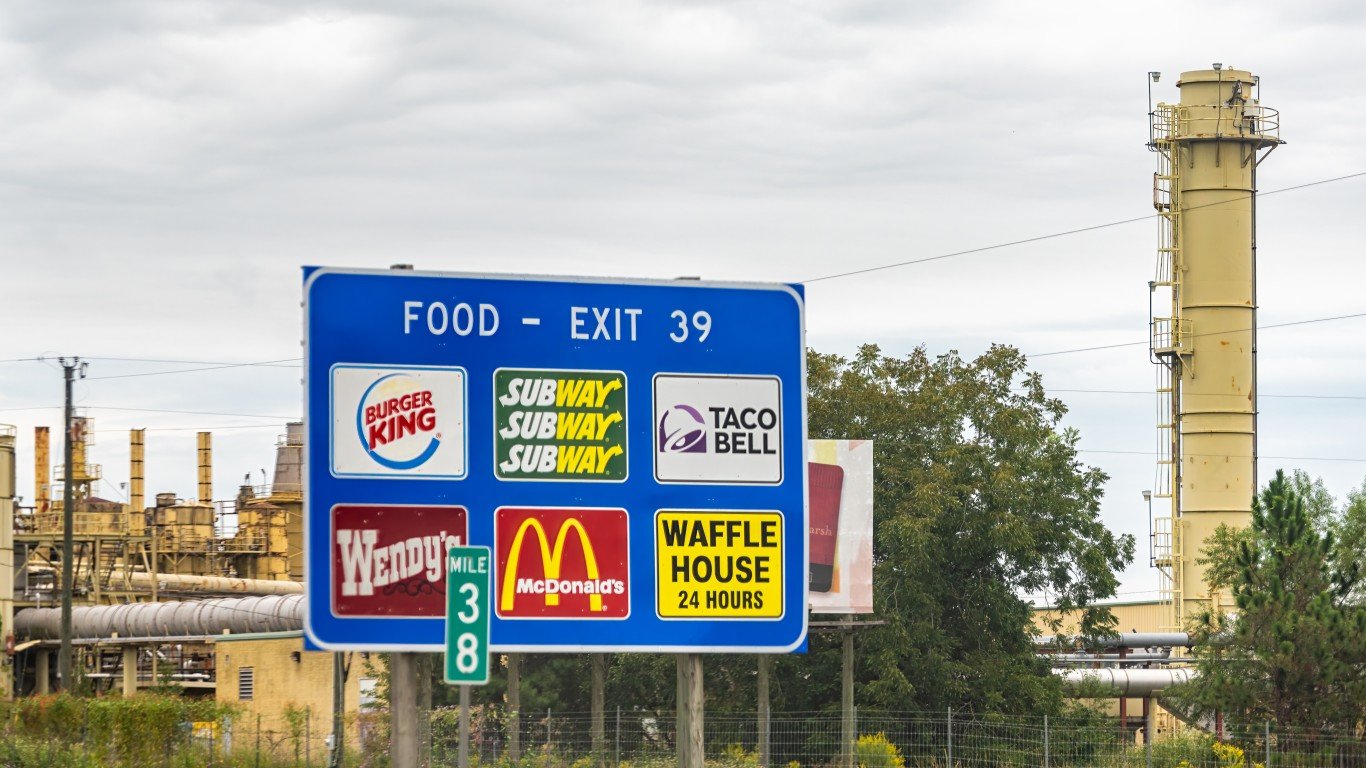

IKEA is known for being a bit of a maze, and they seem to have adopted that stance for their corporate structure as well. Holding companies, franchisees, retail locations—it’s all a bit of a jumble. In many ways, this is intentional. Obscuring which parts of a company control assets, especially internationally, allows IKEA to get away with some complicated tax loopholes. There are also just some outright unknowns regarding the true ownership of the company, but the general structure does lend us some ideas as to how they operate.
Let’s break down how the various arms of IKEA ownership operate, plus learn a bit about its founding and leadership today.
To compile this information, 24/7 used sources listed on INGKA Foundation’s website, as well as public resources visualizing the holding structure of IKEA.
Who Really Owns IKEA?
IKEA’s ownership structure is outright confusing, particularly if you aren’t particularly engaged in corporate governance structure politics. Ultimately, IKEA is a multi-layered ownership arrangement in which multiple branches of ownership contribute to the uniqueness and attempted prolongation of the IKEA brand.
Inter IKEA Foundation
At the top of IKEA’s ownership structure is the Inter IKEA Foundation. This group operates as the primary “custodian” of the Inter IKEA Group. The foundation’s overarching mission is clear: to secure the independence and longevity of the IKEA Concept. This section of the entire network of parent companies is probably the best answer if someone were to ask, “What company owns IKEA?” but to be clear, there is still some nuanced involved.
This parent, through subsidiaries, is responsible for almost all of the day-to-day operations of the IKEA stores and manages the supply and manufacturing of most products in stores.
aINGKA Foundation
Another of the three “parents” of the group is the INGKA Foundation. INGKA Foundation is a strategizing and investment-oriented leg of the structure. Owning and operating shopping centers in tandem with IKEA stores, the organization’s investments are geared toward the long-term development of the core business (mostly through property investments) and securing the group’s financial position.
The INGKA Foundation operates as an IKEA franchisee, owning and operating over 390 stores in around 32 countries. This is all down through the INGKA Group, which itself is a subsidiary of the INGKA Foundation.
Interogo Foundation
Recently, the Interogo Foundation split from the Inter IKEA Foundation. Now, the role of the Interogo Foundation is simplified, although most of the resources listed online say something identical to the role of the Inter IKEA Foundation:
“Interogo Foundation has an identical purpose to Inter IKEA Foundation, but the two enterprise foundations have different roles.
Interogo Foundation focuses on governing the investment business and providing the financial reserves required to secure independence and longevity. Interogo Foundation shall, through its investment business, secure a financial reserve for rainy days for when the IKEA Concept at some time in the future were to face very serious challenges.
Inter IKEA Foundation focuses on governing the IKEA businesses and secures independence and the longevity of the IKEA Concept.” – Interogo Foundation
This aspect of the business is probably the most unclear, but that is likely due to the recent divestment from the Inter IKEA Foundation and intentional opaqueness for tax purposes. This foundation has been historically very close to the founding family of IKEA, and with inheritance taxes being so high, this foundation likely plays some part in that strategy.
Breaking Down IKEA’s 3-Parent Ownership
Inter IKEA Foundation
- At the top of IKEA’s ownership structure is the Inter IKEA Foundation, operating as the primary “custodian” of the Inter IKEA Group.
- The foundation’s overarching mission is to secure the independence and longevity of the IKEA Concept.
- Through subsidiaries, it is responsible for almost all of the day-to-day operations of IKEA stores and manages the supply and manufacturing of most products in stores.
INGKA Foundation
- Another of the three “parents” of the group is the INGKA Foundation, serving as a strategizing and investment-oriented leg of the structure.
- Operating as an IKEA franchisee, it owns and operates over 390 stores in around 32 countries through the INGKA Group, a subsidiary.
- Investments focus on the long-term development of the core business, primarily through property investments and securing the group’s financial position.
Interogo Foundation
- Recently separated from the Inter IKEA Foundation, the Interogo Foundation has a simplified role focused on governing the investment business.
- It provides financial reserves required to secure independence and longevity, especially in the face of serious challenges to the IKEA Concept in the future.
- The recent divestment and intentional opaqueness for tax purposes contribute to some uncertainty, but the foundation’s historical ties to the founding family suggest a role in strategic inheritance tax planning.
Essential Tips for Investing: Sponsored
A financial advisor can help you understand the advantages and disadvantages of investment properties. Finding a qualified financial advisor doesn’t have to be hard. SmartAsset’s free tool matches you with up to three financial advisors who serve your area, and you can interview your advisor matches at no cost to decide which one is right for you. If you’re ready to find an advisor who can help you achieve your financial goals, get started now.
Investing in real estate can diversify your portfolio. But expanding your horizons may add additional costs. If you’re an investor looking to minimize expenses, consider checking out online brokerages. They often offer low investment fees, helping you maximize your profit.
Thank you for reading! Have some feedback for us?
Contact the 24/7 Wall St. editorial team.




